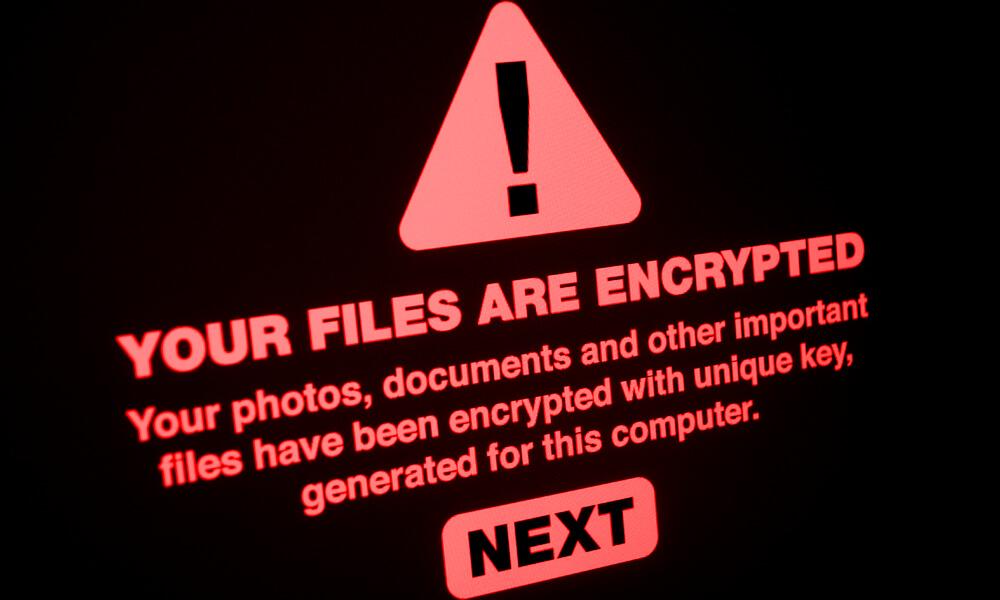Ransomware is a form of computer malware that infects your computer and takes control over it by displaying messages demanding a fee to be paid before your system will be restored to normalcy.
Ransomware is a criminal moneymaking scheme that can be installed by a click on a link in your email, instant messages or websites. After installing unaware, it will prevent you from accessing your files by encrypting them so you can’t access them.
Daily backup to secured cloud storage or external hard drive is your best defence. To prevent being hold captive by Ransomware, avoid opening suspicious links or attachments sent from both known and unknown accounts, and avoid visiting unsecured websites.
In this article, we are going to look at the best ways to protect your computer from a ransomware attack. If you are still with me, keep on following.

Ways To Protect Yourself From Ransomware Attack
1. Backing Up your Files Regularly
- Invest in a removable storage drive. Investing in a removable storage device is the most effective way to back up your files. You only should connect your hard drive to your computer when you need to back up your files from your personal computer and it should be offline. Once the backup is done, unplug the external case and go back to using your device normally. Once there is a ransomware attack, you can restore your files back from your removable storage.
- Store your files with a secured cloud-storage service. Many popular secured cloud service is around to back up your files. Few of the well-known ones are Dropbox, Carbonite, and Onenote. You will be able to restore your files hijacked during a ransomware attack if you have secured cloud storage. You have to make sure your cloud storage allows you to access earlier versions of your files, so you can recover them as at before the attack.
- Backup your files regularly. This is a secured way of maintaining your files if there should be an attack. It should be some sort of tradition, always back up your files to an external hard drive or cloud storage services regularly.
2. Securing Your System
- Install a dedicated ransomware blocker software. Even if there is an antivirus program on your computer, install a dedicated ransomware blocker software as an addition to it. There are few free ransomware blocker software around but the two best known as at writing this article are Cybereason RansomFree and Malwarebytes Anti-Ransomware. Alternate paid versions include Bitdefender Antivirus Plus and Webroot SecureAnywhere Antivirus.
- Update your security software regularly. All these software’s will not be effective without updating your operating system’s security suit. Inculcate the habit of running updates whenever they are offered from your operating system to avoid any attacks.
- Install a pop-up ad blocker. Most malware’s are embedded inside advertisements served from unsecured websites. Once you open those ads or pop-ups, the ransomware executes at the background leaving your computer hijacked. To be safe, install ad-blockers inside your web browsers to keep popups from displaying when you visit unsecured websites.
- Keep your browsers up to date. Regularly install updates from your browser whenever it’s available. These updates fix patches that were left open and could attract malware easily.
3. Adopting Safer Internet Practices
- Avoid opening suspicious emails and links. Ransomware is mostly spread through malicious links or attachments sent via mails. Do not open attachments and links from emails you are not familiar with. Always verify the address of the sender before opening attachments and links. If possible, contact the sender and be sure of the source of the link or attachment before opening.
- Check the file extension before opening attachments. Always check the file extension (.doc, .docx, .pdf) and etc before opening attachments. After checking, right-click and select scan for malware and wait after scan before opening. Always avoid opening executable files (.exe) since they can run a ransomware application.
- Restrain yourself from visiting unprotected websites. There is a lot of harm in visiting unprotected websites. Many viruses are shared from these websites and visiting them puts you at great risk.
- Disconnect immediately after opening a suspicious link. When you realise you have clicked on a suspicious file but is in the process of executing and the ransomware interface has not appeared, quickly disconnect from your network to stop the process. If you act quickly, you might be able to stop the ransomware attack before it finishes.
Conclusion
Being held captive on your own computer virtually without being able to do anything is a feeling you would not love to experience. The ransomware virus is still spreading and affecting millions worldwide.
In this article, I have shared practicable ways you can adhere to keep you away from being attacked by ransomware.



